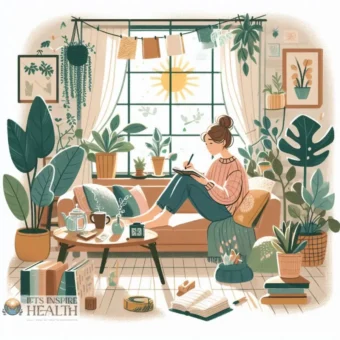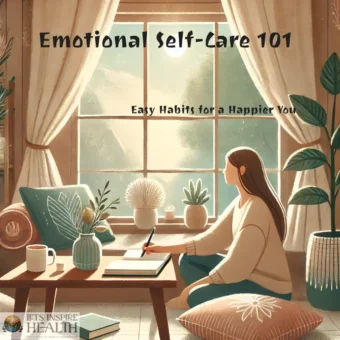In our increasingly busy world, quality sleep is often the first thing sacrificed in our daily lives. Yet, good sleep is essential for overall health, impacting energy levels, mood, mental clarity, and immune function. Creating a dedicated sleep sanctuary—a peaceful, restful environment designed for optimal rest—can make a significant difference in the quality of your sleep and, consequently, in your daily life.
This guide will take you through the essentials of building a restful sleep sanctuary, from design choices to nightly routines, to create a space where tranquility meets restoration. Join us on this journey to transform your bedroom into a peaceful haven that encourages deep, rejuvenating sleep.
Table of Contents
- Understanding the Importance of Quality Sleep
- Crafting a Calming Bedroom Design
- Choosing a Sleep-Friendly Color Scheme
- Selecting Comfortable and Breathable Bedding
- The Role of Lighting in Promoting Rest
- Reducing Noise and Creating Silence
- Regulating Room Temperature for Comfort
- Using Scents and Aromatherapy for Relaxation
- Decluttering and Simplifying Your Space
- Establishing a Calming Bedtime Routine
- Final Thoughts on Embracing Your Sleep Sanctuary
1. Understanding the Importance of Quality Sleep
Quality sleep isn’t just about getting a set number of hours each night; it’s about spending sufficient time in each sleep stage, especially deep and REM sleep. These stages are where restoration and mental processing occur, preparing you for the day ahead.
Creating a bedroom environment that encourages uninterrupted, restful sleep can make a world of difference in how you feel physically, mentally, and emotionally. By creating a peaceful sanctuary, you’re prioritizing health and giving your body the best chance to rest deeply.
2. Crafting a Calming Bedroom Design
A restful sleep sanctuary begins with intentional design. Start by making your bedroom a dedicated space for relaxation and sleep only, avoiding distractions like workspaces or exercise equipment within your room.
Key Design Tips:
- Simplify Your Space: Choose minimalist, clutter-free decor to promote a sense of calm.
- Comfortable Furniture: Invest in a quality mattress and ergonomic pillows. Your bed should be the ultimate source of comfort.
- Soft and Natural Materials: Choose furniture and decor made from materials like wood, cotton, and linen, which add a natural touch and are breathable and hypoallergenic.
3. Choosing a Sleep-Friendly Color Scheme
Color has a profound impact on mood and can either promote or disrupt relaxation. For a sleep sanctuary, calming, muted tones are ideal, as they help calm the mind and create a peaceful atmosphere.
- Best Colors: Shades of blue, soft greens, lavender, and warm earth tones are known for their calming effects.
- Avoid Bright Colors: Bold colors like red and orange can be overstimulating, making it difficult to wind down.
- Personalize It: While it’s best to choose calming hues, feel free to incorporate colors that you find particularly soothing.
Consider painting an accent wall or choosing bedding in a color that soothes you most, adding a personal touch to your sanctuary.
4. Selecting Comfortable and Breathable Bedding
Your bedding plays a crucial role in how well you sleep. Quality, comfortable bedding that’s suited to your body temperature can significantly improve your sleep experience.
- Sheets and Pillowcases: Opt for high-quality materials like cotton or linen, which are soft, durable, and breathable.
- Pillows and Mattress: Choose pillows suited to your sleeping position (side, back, or stomach) and a mattress that provides adequate support for your spine.
- Blankets and Comforters: Layering your bed with cozy blankets allows you to adjust according to your temperature needs. Weighted blankets can also help reduce anxiety and improve sleep quality.
5. The Role of Lighting in Promoting Rest
Light has a significant effect on our sleep-wake cycles. Exposure to bright light in the evening can suppress melatonin production, making it harder to fall asleep. Instead, opt for lighting that promotes relaxation.
- Dim the Lights: Install dimmers or use bedside lamps with soft light bulbs. Avoid overhead lighting at night.
- Warm, Soft Lighting: Choose bulbs that emit warm hues to create a cozy, calming environment.
- Blackout Curtains: Blackout curtains block out external light and maintain a dark, serene space, especially helpful if you’re sensitive to morning light or live in a busy area.
6. Reducing Noise and Creating Silence
Noise is one of the biggest disruptors of quality sleep. Reducing outside sounds and creating a quiet environment is essential in a restful sleep sanctuary.
- Soundproofing Tips: Consider heavy curtains or rugs to absorb sound. Door sweeps and weatherstripping can also help keep noise out.
- White Noise Machines: If total silence is hard to achieve, use a white noise machine or fan to drown out background noises with a consistent, gentle hum.
- Earplugs: For particularly noisy environments, comfortable earplugs may provide the quiet needed for deeper sleep.
7. Regulating Room Temperature for Comfort
Temperature can greatly impact sleep quality, as both overly warm and cool temperatures can cause discomfort.
- Ideal Temperature: Experts recommend keeping your bedroom temperature between 60-67°F (15-20°C) for optimal rest.
- Cooling Options: If you tend to feel warm, use a fan or invest in moisture-wicking bedding.
- Heating Options: In colder months, consider layering blankets or using a space heater to keep your room cozy but not too warm.
8. Using Scents and Aromatherapy for Relaxation
Scents can evoke feelings of calm and relaxation, helping you ease into sleep. Aromatherapy, specifically, uses natural essential oils to promote relaxation and well-being.
- Best Scents for Sleep: Lavender, chamomile, and eucalyptus are popular choices for relaxation.
- How to Use Scents: You can use a diffuser, pillow spray, or even a small sachet near your bed. These gentle aromas provide a comforting ambiance without overwhelming the senses.
Experiment with different scents to discover which resonates most with you and encourages a peaceful state.
9. Decluttering and Simplifying Your Space
Cluttered spaces can lead to stress and disrupt relaxation, making it harder to wind down. Keeping your bedroom clean and organized promotes mental clarity and a sense of peace.
- Clear Surfaces: Keep nightstands, dressers, and other surfaces free of clutter. Store items you don’t need out of sight.
- Organize Your Wardrobe: A well-organized wardrobe and drawers prevent a cluttered feeling and improve ease of access.
- Minimal Decor: Limit the number of decorative items in the room to avoid a busy, distracting environment.
A clean, tidy room fosters a calm atmosphere and can make falling asleep easier and more enjoyable.
10. Establishing a Calming Bedtime Routine
Establishing a bedtime routine is just as important as creating a restful environment. Engaging in pre-sleep rituals tells your body it’s time to wind down and prepares you for restful sleep.
- Limit Screen Time: Turn off electronic devices at least an hour before bed to avoid blue light exposure.
- Meditation and Deep Breathing: Practicing a few minutes of meditation or deep breathing can calm the mind and reduce stress.
- Reading or Journaling: Quiet activities like reading a book or writing in a journal allow you to reflect on your day and let go of any lingering thoughts.
A consistent routine helps regulate your sleep-wake cycle, making it easier to fall asleep and wake up feeling refreshed.
11. Final Thoughts on Embracing Your Sleep Sanctuary
A sleep sanctuary isn’t just about aesthetics—it’s about creating a space that soothes your mind and supports deep, restful sleep. Every detail, from lighting and color to sound and scents, plays a role in fostering an environment that nourishes both body and mind.
Building a restful sleep sanctuary takes time and thought, but the investment pays off in improved sleep quality and overall well-being. Your bedroom should be a place where you can unwind, let go of the day’s worries, and drift into a peaceful, rejuvenating rest.
Embrace your sleep sanctuary as a retreat from the world. Prioritize comfort, simplicity, and relaxation, and enjoy the tranquility that comes with a dedicated space for sleep.







